The Social Museum Collection at Harvard University

Harvard University's Social Museum was established in 1903 as part of the University's newly-formed Department of Social Ethics, devoted to the comparative study of social conditions and institutions in the United States and abroad. This website presents more than 6,000 images from the Social Museum's collection, including photographs, pamphlets, prints, and architectural drawings. Images are available though an extensive search function, with a keyword search, artist list (including photographers Lewis Hine and Francis Benjamin Johnston), and 37 topics (e.g. anarchism, charity, government, health, education, housing, Socialism, and war). Also available is an online exhibit that introduces three of the Social Museum's primary subjects of study: Poor Relief, Social Justice, and Industrial Betterment. This section can serve as an introduction for those unfamiliar with the progressive era and early 20th-century social reform movements in the United States and abroad.
The Woodrow Wilson Presidential Library eLibrary
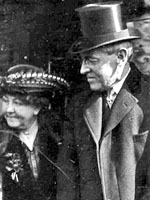
This website provides access to more than 5,700 documents surrounding Wilson and Wilson's family's personal life and work, including letters, speeches, notes, political cartoons, newspaper articles, and personal papers. All documents are keyword searchable and browseable by several topics, including debate, health, League of Nations, Paris Peace Conference, sport, and World War I. Much of Wilson's personal correspondence is included here, documenting his discussions with correspondents such as his wives Ellen Axson Wilson and Edith Bolling Wilson, and personal aide Cary Grayson. Featured documents include several of Wilson's most famous speeches: "Peace Without Victory" on the eve of World War I, "Fourteen Points for Peace," and "Women's Suffrage Amendment" in 1918. Useful both for those interested in Wilson's life and work, as well as those interested in early 20th-century U.S. political and social history, and foreign policy.
Land of (Unequal) Opportunity
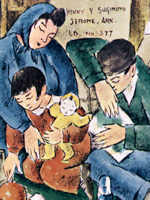
While many are familiar with the 1957 Little Rock High School integration crisis, far fewer students of U.S. civil rights history may be aware of the longer history of that struggle in Arkansas. This website includes more than 460 documents and images, including cartoons, court decisions, photographs, newspaper articles, letters, and essays related to that history. For example, an essay on the meaning of relocation written by a high school student at Arkansas's Jerome Relocation Center in 1943 brings a more personal perspective to the story of internment, as the student describes the ways in which members of her community have struggled between the "fighting spirit" and the "giving up spirit." Users new to civil rights history in Arkansas may want to begin with the extensive timeline that describes events from the arrival of slaves in Arkansas in the 1720s to a 2006 State Supreme Court ruling that struck down a ban on gays serving as foster parents. The website also includes 10 lesson plans geared for middle school students that make use of the website's resources—such as a speech given by Governor Oral Fabus in 1958. An extensive bibliography of secondary sources related to many aspects of civil rights, including African American, gay and lesbian, and women's issues, Japanese relocation, religious intolerance, political rights, and anti-civil liberties groups and issues, is also available.
U.S. Congressional Serial Set, 1817-1994

[SUBSCRIPTION REQUIRED] This vast archive includes many documents and reports produced by the U.S. Senate and House of Representatives and published between 1817 and 1980, for a total of more than 355,000 items. These items include 48,000 maps, 9,000 illustrations, thousands of reports, and numerous records of committee hearings and floor proceedings. All items are full-text searchable and can be browsed by subject, such as education, economics, food and agriculture, health, Indian affairs, armed forces and conflicts, environment and natural resources, and social issues. Within each of these broad categories, there are hundreds of subject headings, such as "animal welfare" (83 items), "alien labor" (306 items), and "ordnance testing" (353 items). The "Indian Affairs" category, for example, presents thousands of items on agencies and organizations relating to Indian affairs, Indian reservations, treaties, names of Indian tribes, as well as documents relating to hundreds of laws and supreme court cases. There is also a bill number search, an alphabetical list of names of all acts of Congress, and a listing of all documents by U.S. Congress session. All documents can be downloaded in PDF format. In addition, a separate browse feature entitled "Serial Set Maps" facilitates access to thousands of maps from counties and cities across the country. Many of these date to the Civil War-era or later and include images of forts and depictions of field operations. Readex plans to expand coverage through 1994.
Toolbox Library: Primary Resources in U.S. History and Literature
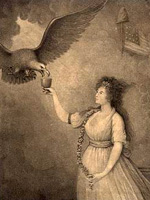
This website features eight "toolboxes" designed to enable secondary teachers to enhance existing units or collaborate with university faculty and create in-depth summer seminars on prominent themes in American history. Topics include: American Beginnings: The European Presence in North America, 1492-1690; Becoming American: The British Atlantic Colonies, 1690-1763; Living the Revolution: America, 1789-1820; The Gilded and the Gritty: America, 1870-1912; The Triumph of Nationalism/The House Dividing: America, 1815-1850; The Making of African American Identity: Volume I, 1500-1865; The Making of African American Identity: Volume II, 1865-1917; and The Making of African American Identity: Volume III, 1917-1968. Each "toolbox" includes roughly 50 historical documents, literary texts, and works of art, divided into topics and accompanied by annotations, substantive discussion questions, an illustrated timeline of the era, and links to numerous additional online resources. Three more "toolboxes" are coming soon: The Unresolved Crisis: America, 1850-1870; Becoming Modern: America, 1918-1929; and Making the Revolution: America, 1763-1789.
African American Sheet Music, 1850-1920
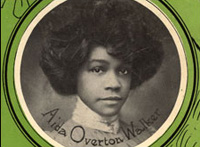
This collection presents 1,305 pieces of sheet music composed by and about African Americans, ranging chronologically from antebellum minstrel shows to early 20th-century African-American musical comedies. Includes works by renowned black composers and lyricists, such as James A. Bland, Will Marion Cook, Paul Laurence Dunbar, Bert Williams, George Walker, Alex Rogers, Jesse A. Shipp, Bob Cole, James Weldon Johnson, J. Rosamond Johnson, James Reese Europe, and Eubie Blake. A "Special Presentation: The Development of an African-American Musical Theatre, 1865-1910" provides a chronological overview that allows users to explore "the emergence of African-American performers and musical troupes, first in blackface minstrelsy, and later at the beginnings of the African-American musical stage in the late 1890s."
In addition, sheet music can be studied to examine racial depictions, both visually, on sheet music covers, and in lyrics; styles of music, such as ragtime, jazz, and spirituals; and a variety of topics of interest to popular audiences, including gender relations, urbanization, and wars. Includes a useful 80-title bibliography and 15-title discography. Much of the material is disturbing due to its heavy dependence on racial caricatures; however, students can gain insight into racial attitudes through an informed use of this site.
Virginia Historical Society
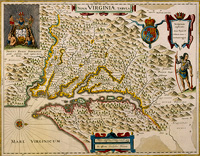
Since 1831, the Virginia Historical Society has been collecting materials documenting the lives of Virginians. This website provides information for researchers and the broader public interested in visiting the Society's headquarters in Richmond, including a collections catalog, finding guides to specific collections, and information about physical exhibitions. The website also includes significant digital holdings. While only five percent of the collection has been digitized, this represents more than 5,000 items, grouped into 14 digital collections. These collections include maps, drawings, paintings, postcards, prints and engravings, 19th century photography, as well as topical collections on African Americans, the Civil War, the Retreat Hospital in Richmond, Virginia's manufacturing of arms, the 1852 Virginia General Assembly Composite Portrait, the Reynolds Metal Company (forthcoming), the Garden Club of Virginia (forthcoming), and selections from the Society's ongoing exhibition, The Story of Virginia. The entire collections catalog is keyword searchable, and includes an option to limit the search to digitized materials.
National Park Service, Teaching with Historic Places
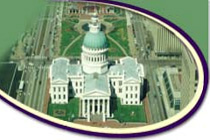
This useful site offers properties listed in the National Park Service's National Register of Historic Places as teaching tools for history, social studies, geography, or civics classes. It contains more than 75 "classroom ready" lesson plans that include maps, primary source readings, photographs and other images, discussion questions, activities, and projects.
The lesson plans can be browsed by location, theme, and time period, and all are based on sites listed in the National Register. The lesson plans are also arranged by featured topics for popular classroom subjects like Native Americans, women, the Civil War, and maritime history. For example, there are lesson plans for teaching Civil War and civilian memory using the Battle of Prairie Grove, Arkansas, and a plan for teaching about maritime history using the Fort Hancock site along the New York coast.
The plans cover all time periods in American history, but the site is particularly strong from the Civil War through the Civil Rights movement. An author's packet shows teachers how to devise new lesson plans using National Park Service properties. A "Professional Development" section offers a list of upcoming workshops and presentations as well as a bibliography of more than 150 National Park Service and other publications on teaching history with historic sites. Though the lesson plans are geared toward middle school students, they are easily adaptable to high school or college survey courses. This site is ideal for teachers looking for creative ways to bring historic sites into the classroom.
U.S. Electoral College
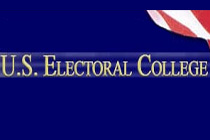
Basic statistical data and explanatory material on the workings of the Electoral College, provided by the Federal office that coordinates its operations. Data includes electoral and popular vote totals for presidential elections since 1789; listings by state of electoral college members for 1992-2000; facsimiles of certificates of ascertainment and certificates of votes for the 2000 election; and a digest of current state laws and requirements. Also offers a 2,700-word procedural guide; relevant federal law provisions; a 1,600-word description of state responsibilities; and 10 links to additional National Archives sites of relevance. A quick and easy way to locate vote tallies and legal information regarding the institution of the Electoral College.
